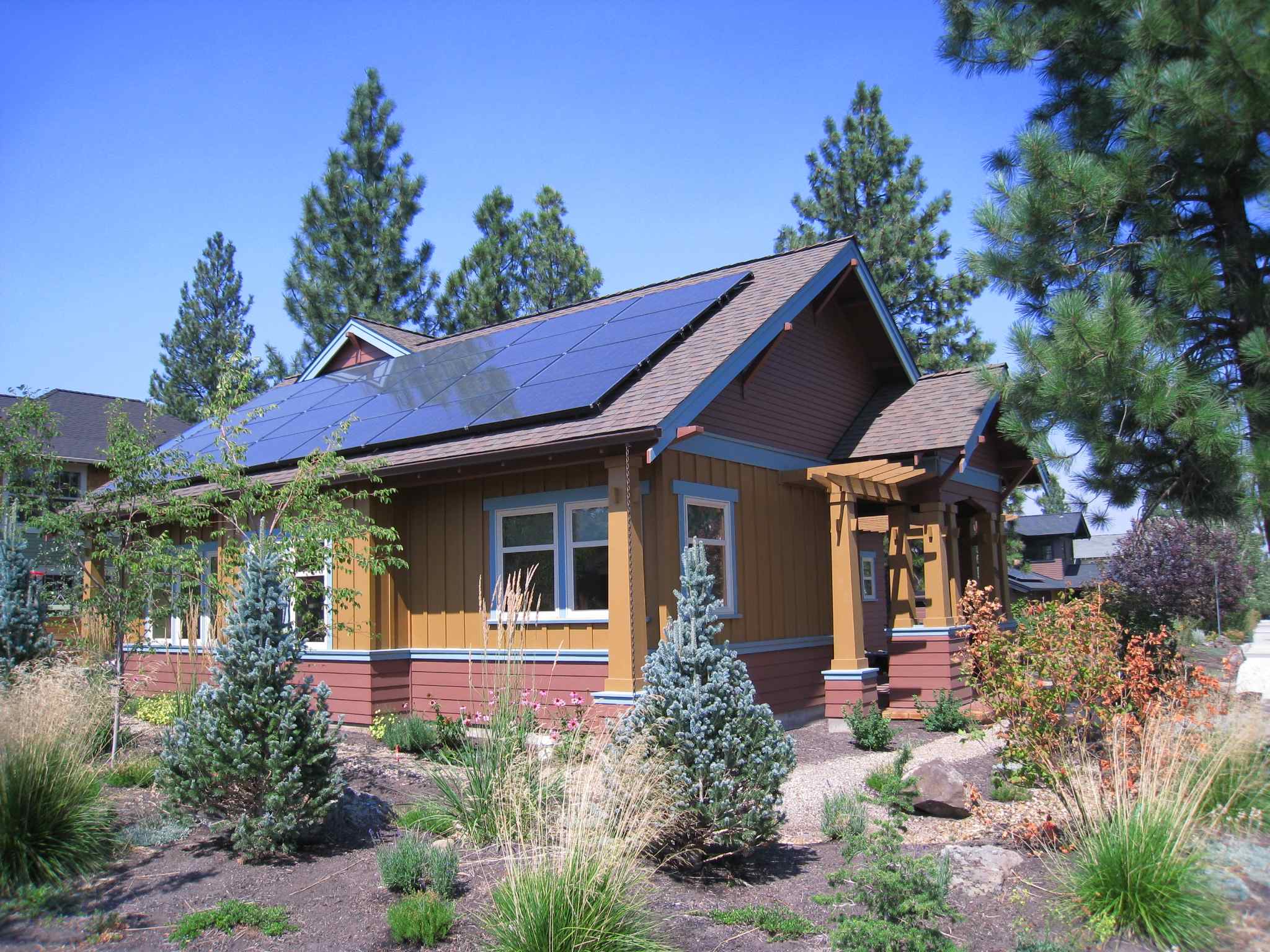As a promoter of zero energy buildings, I’m constantly explaining to builders and homebuyers how zero energy homes and buildings pay for themselves. I covered this last month in my post, “Buying Power of Energy Savings,” which describes how the energy savings from a zero energy building completely covers the additional monthly mortgage payments needed for energy efficiency features. But there is another way to fund the added cost that’s even better. A simple calculation shows how you can have a zero energy home for the same price as a conventional one, and keep the monthly savings in your pocket. Here’s how it worked for me.
In 2015, my wife and I built a new home. We owned a small lot and wanted to spend no more than $180,000 on construction. Production homes in new subdivisions were running around $150/square foot (sq. ft.). Based on that price, we could have purchased a very modest 1,200 sq. ft. home. Instead, we spent the same amount of money to build a zero-energy home that’s only 950 sq. ft. We have everything we need and the zero energy features were free.
While many singles or couples would find 950 sq. ft. to be plenty of space, I realize that others would not. So let’s take another example to show how this works for a larger home as well, one that would accommodate a family of four. In the U.S., the average house is about 2,400 sq. ft. and the median price is about $322,000 as of December 2016. If you can afford that price, you can buy a zero energy house for the same price. The only difference is that the home’s footprint would be slightly smaller at 2,100 sq. ft. But going smaller doesn’t mean sacrificing livability. In fact, many home buyers feel liberated when moving into a smaller home. Small spaces can be thoughtfully designed to feel bigger and be more comfortable. A good designer can make smaller spaces work even better for you.
It’s important to emphasize that monthly energy savings have no bearing on this calculation. You would pay nothing for your energy use, keep all the savings, and spend the cash however you want while paying no more for your home.
My illustrations above assume that the zero energy features cost $40,000 before incentives, which was about the cost of my upgrades for solar panels, thicker insulation, air sealing, heat recovery ventilation, and everything else.
Since every situation is different, I’ve created a simple calculator that allows you to enter your own assumptions for home cost, size, and zero energy upgrade cost. Feel free to account for any incentives or ignore them. Play around with the numbers as much as your want. Try out the Zero Energy Downsizing Calculator, please let me know what you think of it.
There is a lot of talk about housing affordability, reducing carbon emissions, simplifying life. This is my no-fail way to pay for a zero energy home upgrade that costs you nothing. Give it a try!


Dale Sherman says:
I was thinking this article was about upgrading a retrofit. Do you have a similar calculator for retrofit upgrades to zero energy for existing homes? I imagine it’s a more challenging calculator to create, but it would be most useful.
Bruce Sullivan says:
A remodel/retrofit project would be more complicated, but the principle still applies. If you plan to add living space, you could add less. Or you could reorganize within the existing footprint and redirect the capital to performance improvements. My calculator would still apply, but you probably don’t need a spreadsheet to figure it out. Thanks for your comment.